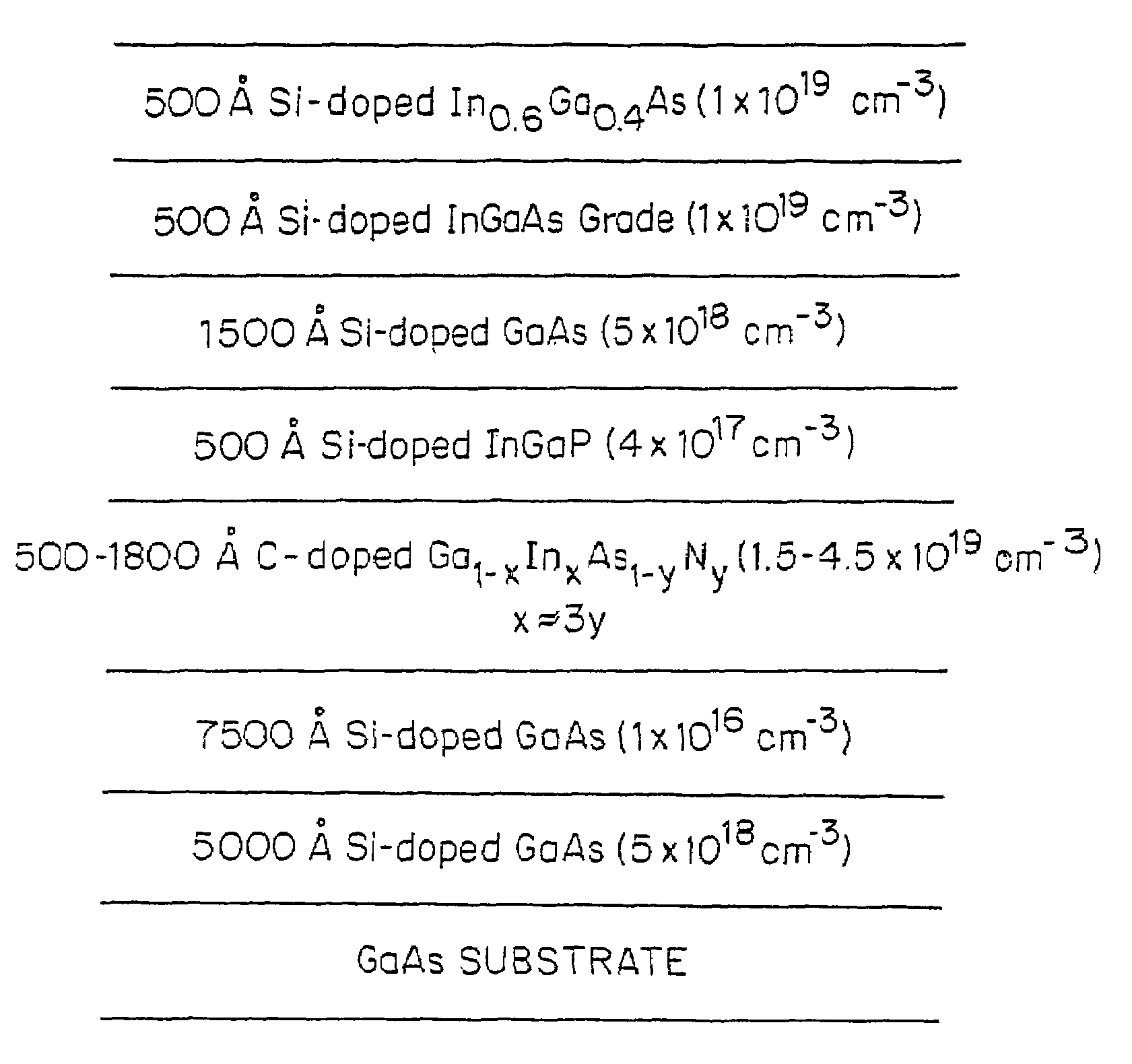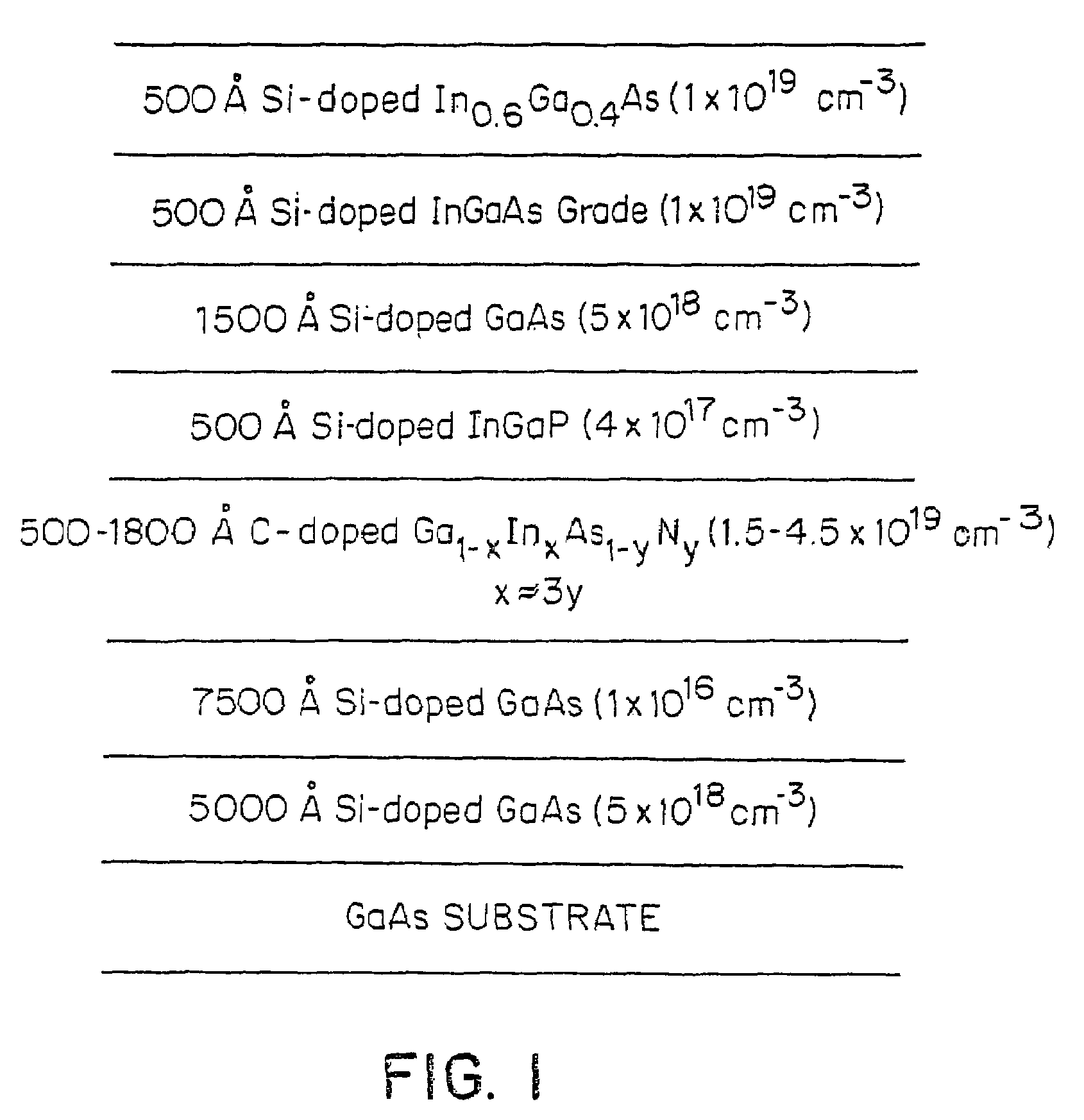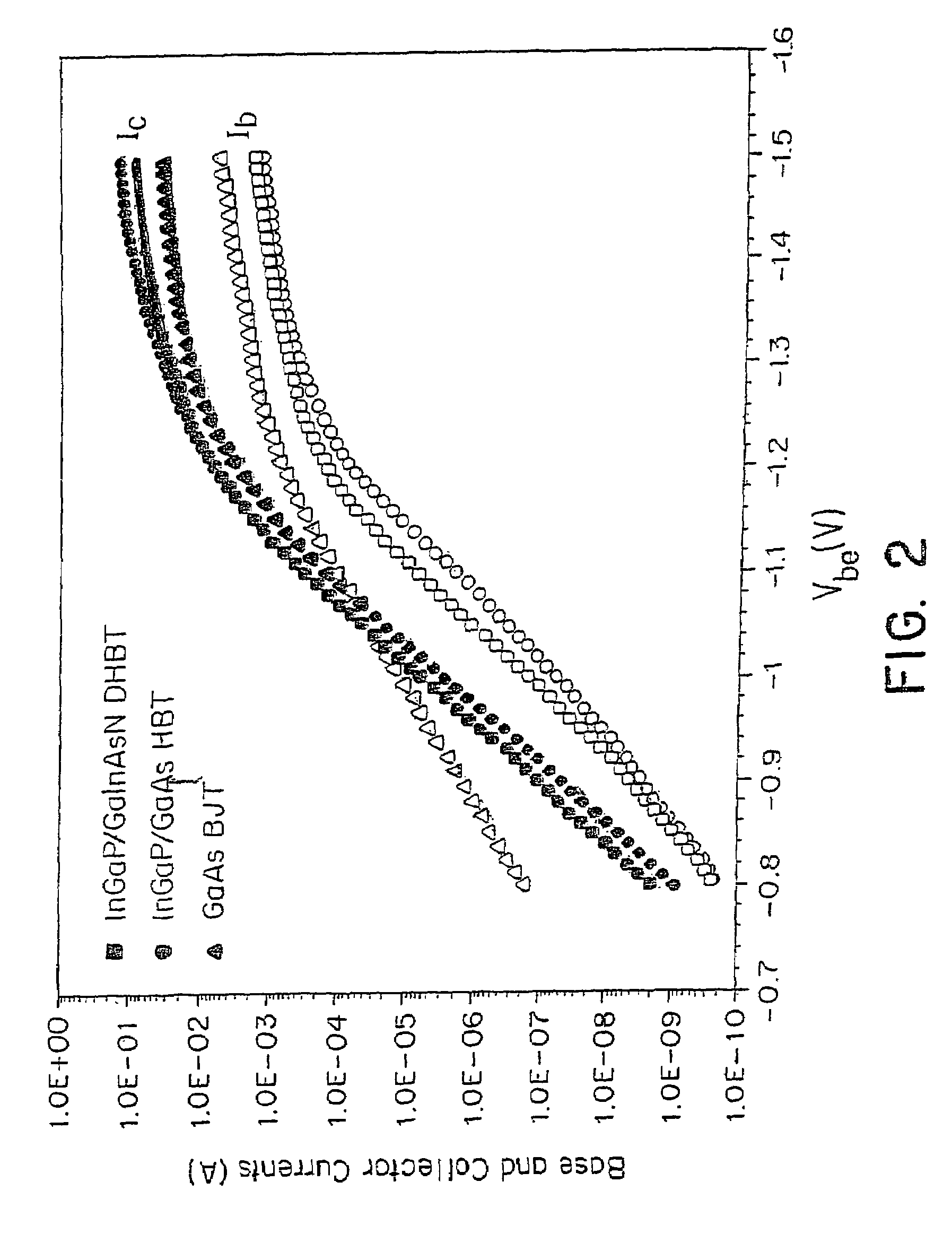Bipolar transistor
a bipolar transistor and transistor technology, applied in the direction of transistors, semiconductor devices, electrical equipment, etc., can solve the problems of limiting the usefulness of devices for low power applications, conduction band spikes at the emitter-base interface, etc., to achieve the effect of reducing the injection of reverse holes, and reducing the voltage budg
- Summary
- Abstract
- Description
- Claims
- Application Information
AI Technical Summary
Benefits of technology
Problems solved by technology
Method used
Image
Examples
example 1
[0069]To illustrate the effect of reducing the band gap of the base layer and / or minimizing the conduction band spike at the emitter / base heterojunction, three different types of GaAs-based bipolar transistor structures were compared: GaAs emitter / GaAs base BJTs, InGaP / GaAs HBTs, and InGaP / GaInAsN DHBTs of the invention. A general representation of InGaP / GaInAsN DHBT structures used in the following experiments is illustrated in FIG. 1. There is only one heterojunction at the emitter / base interface since the base and the collector are both formed from GaAs. The GaAs base layer of the InGaP / GaAs HBT has a larger band gap than the base of the InGaP / GaInAsN DHBT. GaAs / GaAs BJTs have no heterojunctions since the emitter, collector and base are all made of GaAs. Thus, GaAs BJT structures are used as a reference to determine what impact, if any, a conduction band spike at the base-emitter interface has on the collector current characteristics of InGaP / GaAs HBTs. In the DHBTs of FIG. 1, In...
example 2
[0090]All of the GaAs devices used in the following discussion were MOCVD-grown, carbon-doped base layers in which the dopant concentration varied from about 3.0×1019 cm−3 to about 5.0×1019 cm−3 and a thickness which varied from about 500 Å to about 1500 Å, resulting in a base sheet resistivity (Rsb) of between 100 W / □ and 650 W / □. Large area devices (L=75 mm×75 mm) were fabricated using a simple wet-etching process and tested in the common base configuration. Relatively small amounts of indium (x˜1% to 6%) and nitrogen (y˜0.3%) were added incrementally to form two separate sets of InGaP / GaInAsN DHBTs. For each set, growth was optimized to maintain relatively high, uniform carbon dopant levels (>2.5×1019 cm−3), good mobility (˜85 cm2 / V−s), and high dc current gain (>60 at Rsb˜300 W / square). The structure of a DHBT used in the following experiments having a compositionally graded GaInAsN base layer is shown in FIG. 13. Alternative structures for DHBTs having compositionally garded ba...
example 3
[0097]In order to improve the amplifier efficiency and thus lower the operating voltage and extend the battery lifetime, it is desirable to reduce the offset voltage (VCE,sat) and the knee voltage (Vk). One method of lowering the offset voltage is to minimize the asymmetry in turn-on voltages of the base / emitter and base / collector diode pair. DHBTs having wide bandgap collectors have been shown to yield low VCE,sat values, but in practice this leads to a higher Vk and reduces efficiencies because it is difficult to control the potential barrier at the base / collector heterojunction.
[0098]Insertion of a thin layer having a high bandgap (tunneling collector) allowed VCE,sat and Vk to be simultaneously reduced improving the efficiency of the device. FIG. 22 shows a schematic diagram of a DHBT that has a graded GaInAsN base layer and a tunneling collector. The base layer was graded such that there is about a 40 meV bandgap energy difference between the emitter and the collector junctions...
PUM
| Property | Measurement | Unit |
|---|---|---|
| band gap | aaaaa | aaaaa |
| band gap | aaaaa | aaaaa |
| band gap | aaaaa | aaaaa |
Abstract
Description
Claims
Application Information
 Login to View More
Login to View More - R&D
- Intellectual Property
- Life Sciences
- Materials
- Tech Scout
- Unparalleled Data Quality
- Higher Quality Content
- 60% Fewer Hallucinations
Browse by: Latest US Patents, China's latest patents, Technical Efficacy Thesaurus, Application Domain, Technology Topic, Popular Technical Reports.
© 2025 PatSnap. All rights reserved.Legal|Privacy policy|Modern Slavery Act Transparency Statement|Sitemap|About US| Contact US: help@patsnap.com



